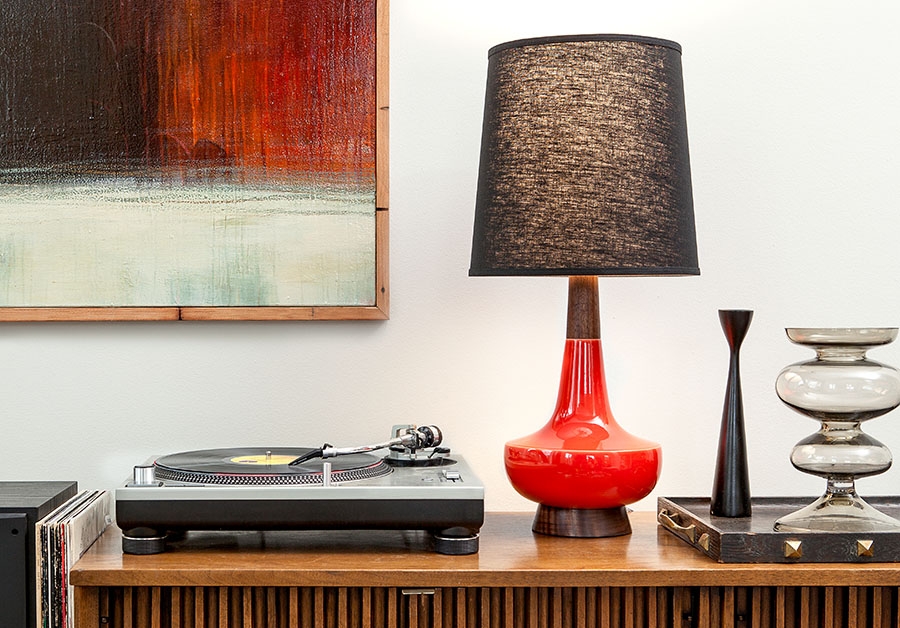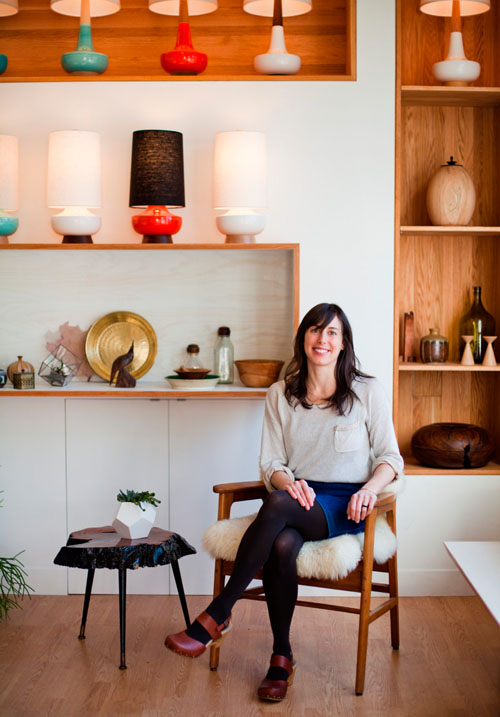The artisan generation redefines manufacturing.
The artisan generation redefines manufacturing
Shannon Guirl fell in love with a broken lamp in Brooklyn, N.Y., and started to fall out of love with her job in television and the Big Apple. A visit to Portland convinced her that her future lay there. Finally, she gathered up her courage, quit her job and drove across the country to Portland, where she joined what is now known as the “maker movement.” Her business, Caravan Pacific, is growing so fast she isn’t sure if she’s still technically a maker or not.
Anacortes, Washington, wasn’t working anymore for Jenn Pereau. She moved to Portland in 2008 and started making vegan treats in her kitchen. Then, a downtown restaurant placed an order. Next thing she knew, she was out of the house and into a real work space in inner Southeast. She had joined the ranks of Portland makers.
Andrew Moe made and sold his first Scandinavian-influenced furniture pieces in Brooklyn. N.Y. But Portland’s reputation as a center for craftsmen and artisans drew him here, where he set up shop in a much smaller and cheaper space in 2012. His business has flourished since the relocation to the maker space called ADX. Moe and his business partner wife, Amanda, would like to scale their tiny business — it’s already profitable and growing. But they don’t want to lose the hand-crafted component that differentiates it.
To outsiders, young people in particular, Portland’s allure owes as much to its emergence as a hothouse for people who make things as it does to its bike, coffee, music and craft-brew cultures. Stories like the above are told and retold in coffee shops and bars around the U.S., inspiring more entrepreneurial spirits to head to Portland to become part of this growing community.
“There’s such a healthy maker economy in Portland,” Pereau says. “It’s almost like there’s a fad status to it now.”
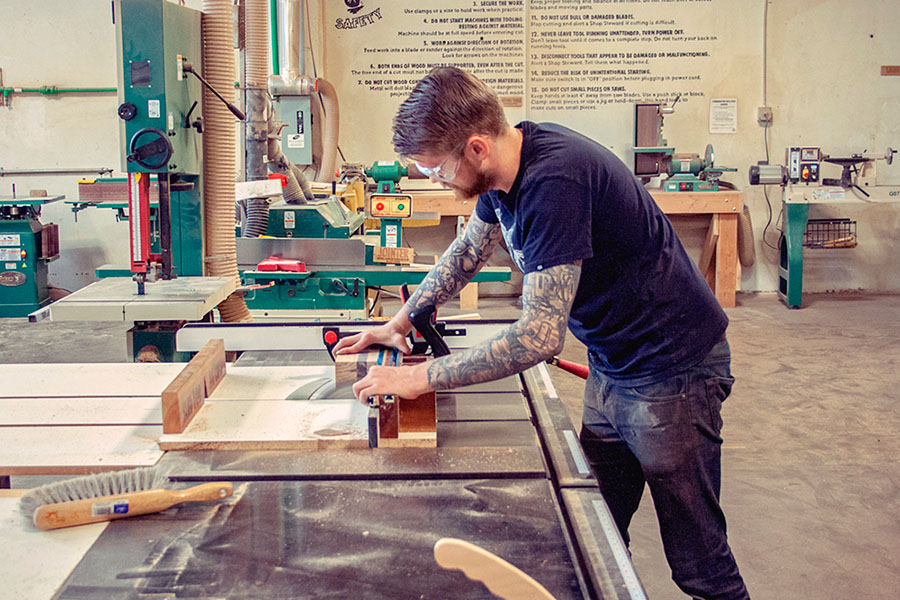
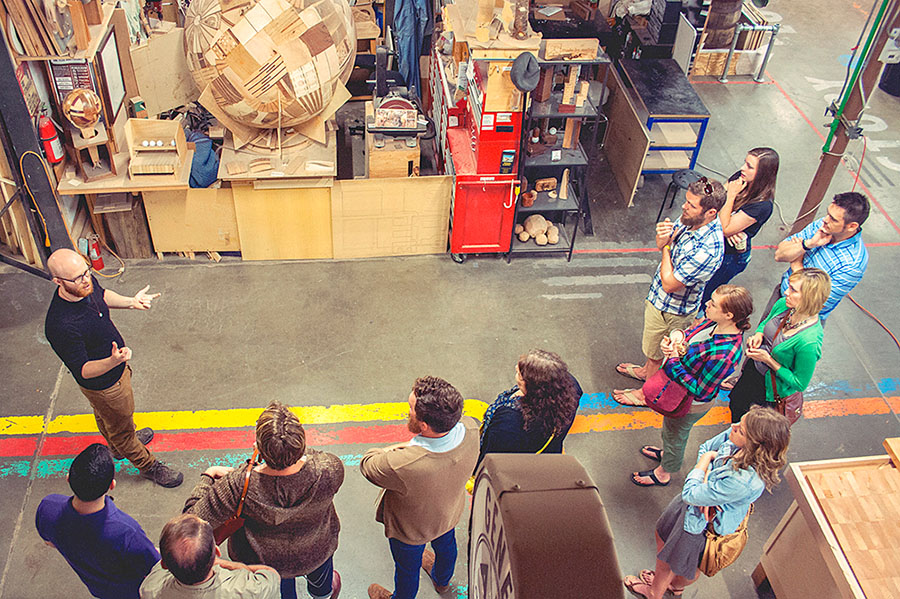
ADX runs workshops and hosts budding makers.
Shannon Guirl, owner of Caravan Pacific |
Exactly how 21st-century makers differ from an earlier generation of bakers, steel fabricators and woodworkers is up for debate. What is clear is much of the modern maker movement in Portland emanated from the cramped work spaces of ADX, located in inner Southeast Portland. Founded by Portland entrepreneur Kelley Roy in 2011, ADX describes itself as “a hub for collaboration where individuals and organizations make and learn.”
Matt Preston, who handles marketing for ADX, guides a visitor through the communal wood and metal shops, and the work spaces occupied by such micro businesses as Zenbox Design (custom furniture and ADU, or tiny house, design), Studio Moe (furniture), Wind & Oar Boat School and Made by Mabry (lighting and accessories). About 200 makers currently belong to ADX. The busiest hours are evenings and weekends because, Preston says, most folks still depend on a day job to support them as they pursue their maker dreams. Preston estimates that 70 to 80 businesses have outgrown their ADX space and moved out into the real world.
Makers are generally micro businesses, often one-person ventures that employ part-timers and contractors as they grow. But their overall impact on the region’s economy isn’t small: In 2014 the trade group Portland Made estimated that its 126 members alone generated $258 million a year in revenue and employed more than 1,000.
In a way, today’s maker movement is a shout-out to the early days of American manufacturing, harkening back even to Colonial times, when smiths turned out horseshoes one at a time, glass blowers singed their hands and faces shaping molten glass, and harness makers worked leather with hand tools and sweat.
The movement also owes plenty to Portland’s status as a mecca of manufacturing and the region’s long, lucrative tradition of making real stuff — rail cars, ships, machine tools. Then there’s affordable warehouse space the original makers built and occupied. Much of it sat virtually vacant for years, inhabited mostly by rock bands, artists and urban pioneers, until the new makers arrived to set up shop.
Today’s makers eschew mass production. But the term, and the business trajectory: raise a few questions. Are Oregon’s industrial manufacturers also true makers? Can maker businesses scale? Today the term “maker” as a brand is so powerful that a seemingly specious argument — who is a real maker? — has taken on a life of its own. No one wants to lose the right to call themselves a maker just because they got too successful.
“A lot of us are growing out of maker status,” acknowledges Caravan’s Guirl, whose shop now pumps out 100 to 200 lamps a month and employs five full-timers and a half dozen contractors. “Our business is already scaling. I’m still trying to figure out how big to grow.”
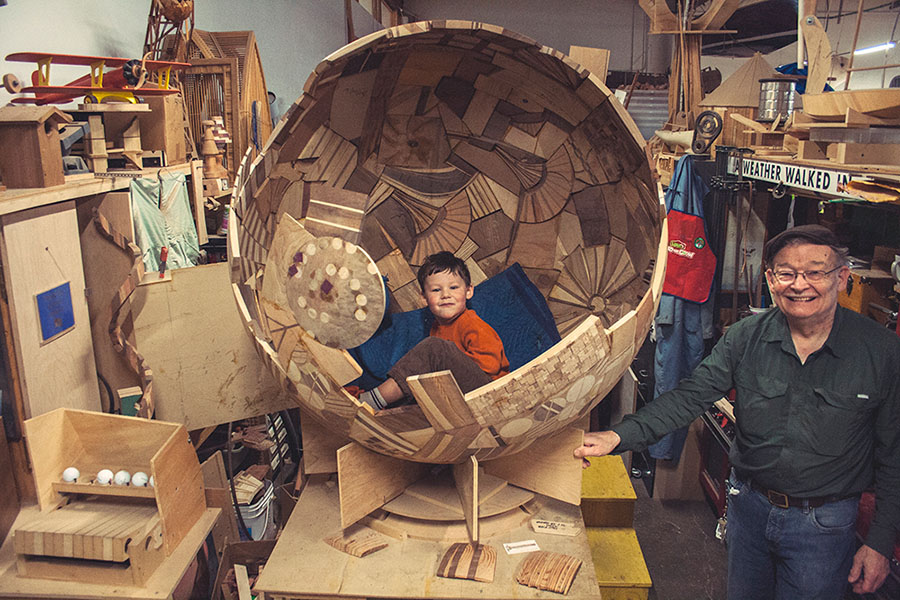
Located in Lents, Bridgetown Natural Foods represents another twist on the Portland maker model. On the surface, it’s a large manufacturer, with $84 million in sales and 300 employees, churning out high-quality snack bars. But the company was founded by Kelly Flatley, one of two founders of Bear Naked Granola — a maker, as it were.
Bear Naked, which produced organic granola bars, took off through word-of-mouth and guerilla marketing and was eventually bought in 2007 for $65 million by Kashi, a Kellogg subsidiary. Bridgetown was funded from a combination of city and state agency loans as well as an angel investment round of experienced food industry investors, The idea was to take the Bear Naked healthy-foods concept to other food entrepreneurs by offering services — product development, sourcing and procurement — to fledgling Bear Naked makers who could take them to the next level.
“Our customers are part of the pipeline of the big company growth curve,” says Klock, who likes to talk shop with those getting started in a maker business, sharing his experience and knowledge. “I have a good network in Portland, and I have tried to support smaller companies that are getting started,” he says.
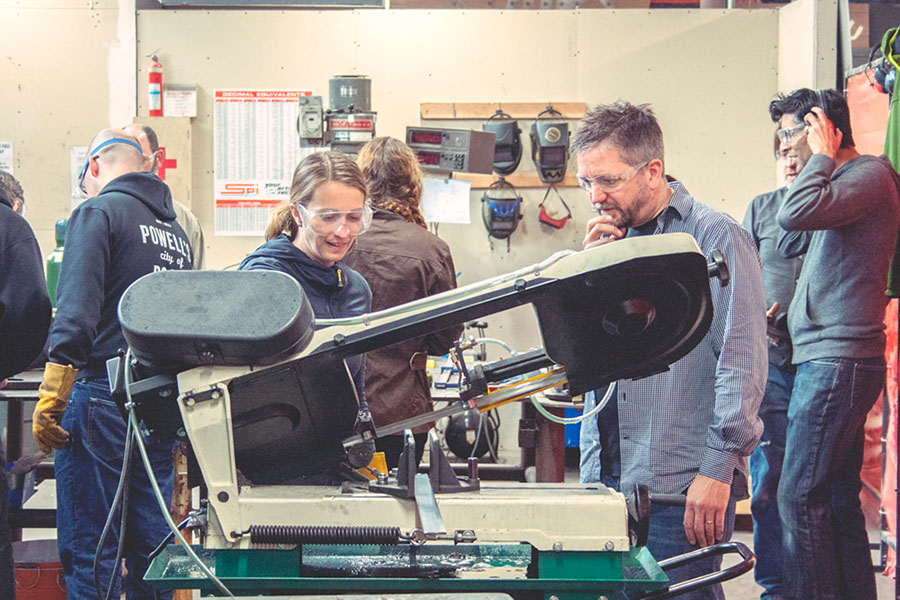
Other organizations aim to support the new movement. Portland Made is a “collective of Portland-based designers, local goods retailers and manufacturers,” as Roy calls it. Honing the business skills of these budding business owners is the mission of Maker’s Nation, a Portland-based nonprofit. As part of its commitment to the local business community, Mercy Corps offers affordable classes for startups on how to run and build a business; makers comprise a good portion of the students.
Coupled with a growing economy, the power of the maker moniker is such that folks are pouring into Portland to join the movement — even if they often arrive with no clue as to what they will make. But the nascent industry also faces challenges to its existence. ADX’s Preston ticks off a list of city planning policies and decisions (or a lack of them) that he says threaten to compromise the industrial eastside maker-movement hub. Increasing rents for warehouse spaces are one problem. He also decries the lack of parking makers need to move their goods. (Concerns about parking might strike some as ironic, considering the millennial-dominated maker movement is often associated with bikes and nonmotorized transportation.)
The potential spread of residential building into inner Southeast represents another cloud on the maker horizon. To date, the area has been zoned primarily for industrial use. Now the city is considering opening up the warehouse district to residential development.
“Without that space set aside for manufacturing, the movement would be dispersed,” Preston says. “The movement is so dependent upon makers’ proximity to one another, and makers identify with the warehouse district. Once it goes residential, they’ll have to move farther out — maybe even to another city more friendly to makers.”
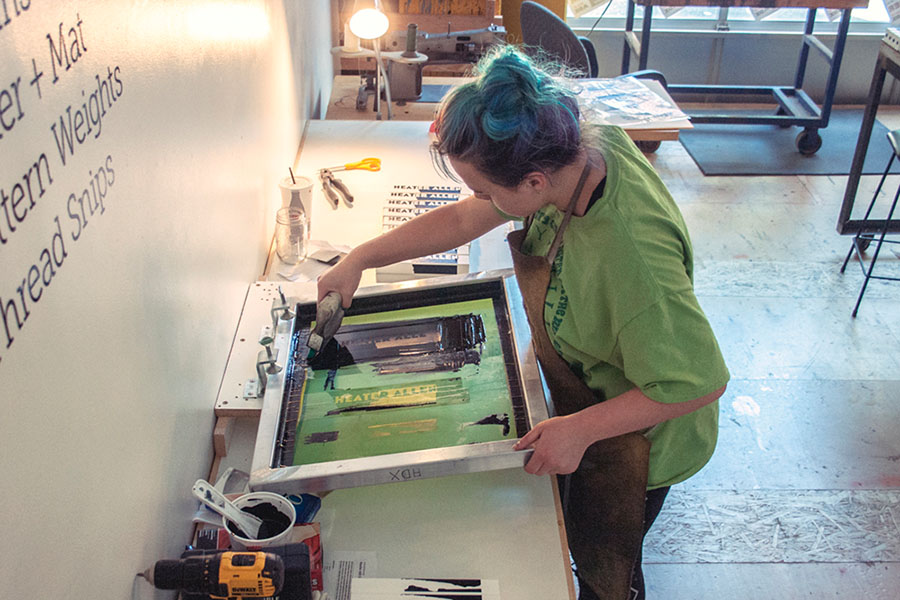
Sue Bal, the Portland Development Commission’s business development manager for outdoor and retail, says city officials value the makers’ economic and cultural contributions and don’t intend to let the movement wither. “There’s an effort to try to limit the amount of residential in the central EastSide,” she says. “We recognize that is an important piece.” The Portland Development Commission has taken dozens of maturing makers under its wing, even inviting some to join trade missions to foreign markets, Bal says.
Roy, who isn’t quite as pessimistic as Preston, says makers are already exploring space-sharing schemes and are working with landlords to devise creative co-working spaces that will make sense financially for the building owners. “Makers are getting together and leasing large buildings. They’re looking for enlightened developers and landlords,” she says. “It’s not a lost cause.” But Roy is also pragmatic. “I’m not sure if you can reverse market forces, no matter what your intentions may be.”
Will the maker movement go the way of San Francisco, home of Maker Magazine, a publication that allegedly coined the phrase 10 years ago? Across the country, in Pittsburgh, another spawning ground for makers, spiking real estate prices are forcing this new wave of small business owners to move on.
In the end, the Portland maker movement is a rich and bubbling economic stew. Some fear the pot could grow cold if the conditions that fostered it — especially the cheap space — were to vanish. But today’s maker movement also begs for context. Is this economic moment any different than when the first Schnitzers, and others like them, arrived in Portland to earn their livings as metal benders, rag pickers and woodworkers? Their humble trades became businesses that gradually expanded along with the city’s economy. Today, they are the wealthy philanthropists after whom buildings are named. Their roots, however, still remain firmly embedded in maker soil, their heritage alive in Schnitzer Steel, Greenbrier Companies and Zidell Marine Corporation.
Will the latest group of small business owners choose another path? Will they cling stubbornly to labels like “maker” and “craftsman” and artisan,” eschewing the trappings and complexities of growth in order to maintain their independence? Stay tuned. The maker movement has only just begun to make itself. And it’s scaling.
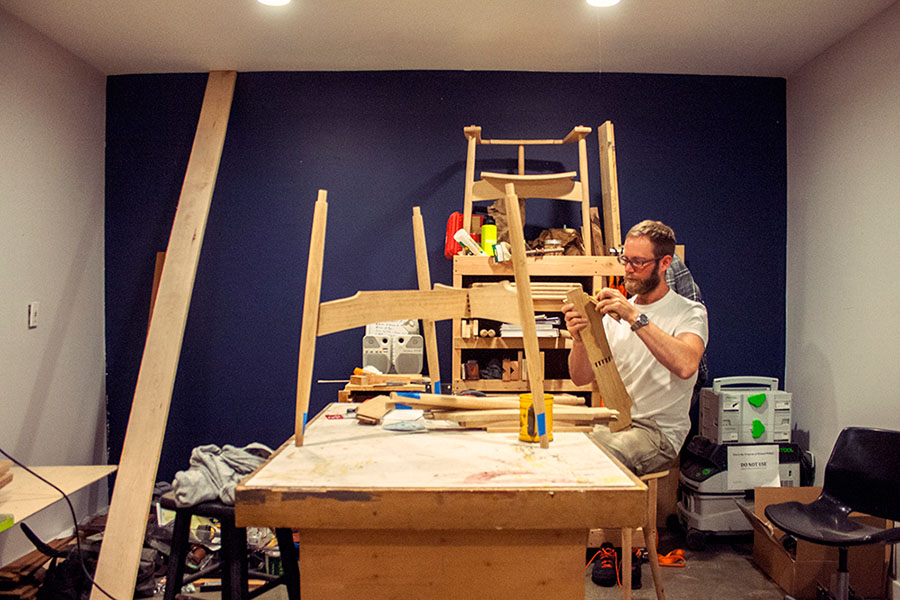
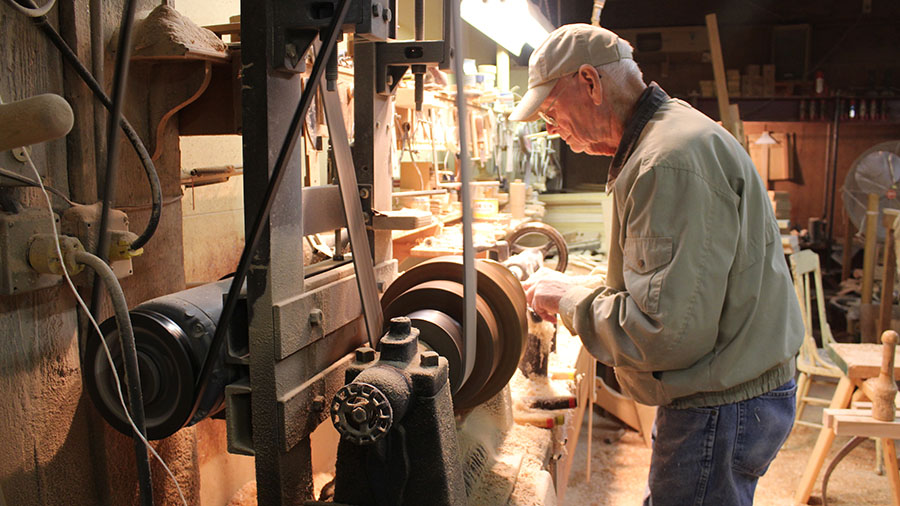
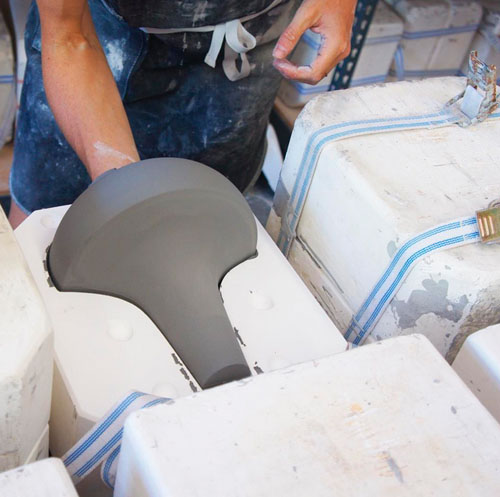
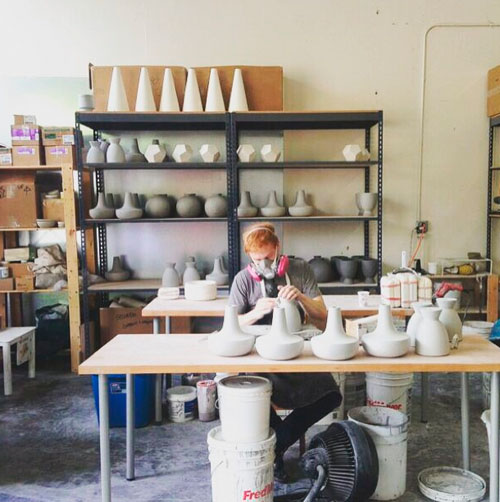
Correction appended: This article has been changed to reflect the following correction. Proceeds from the Bear Naked sale did not help fund Bridgetown Natural Foods.


